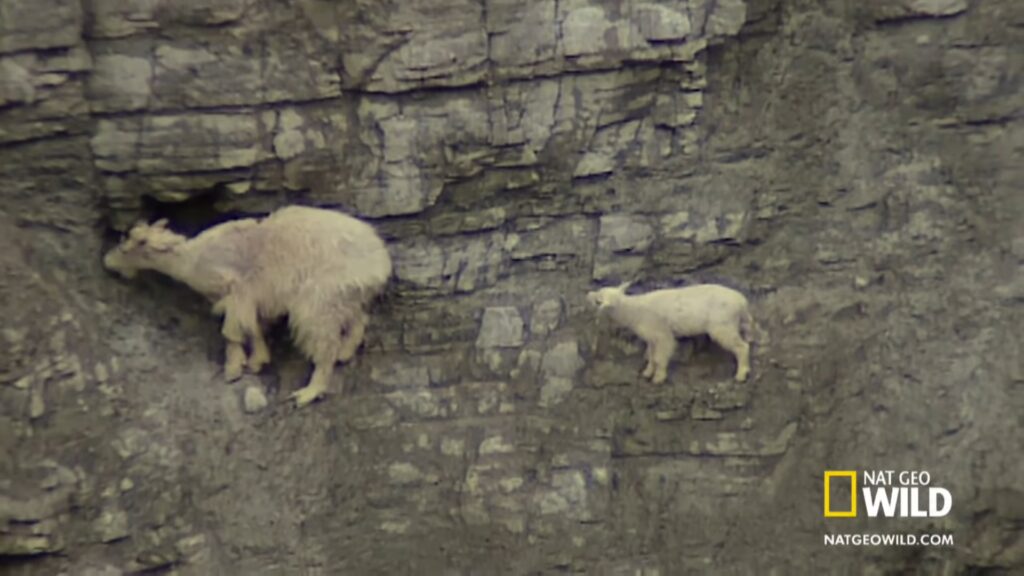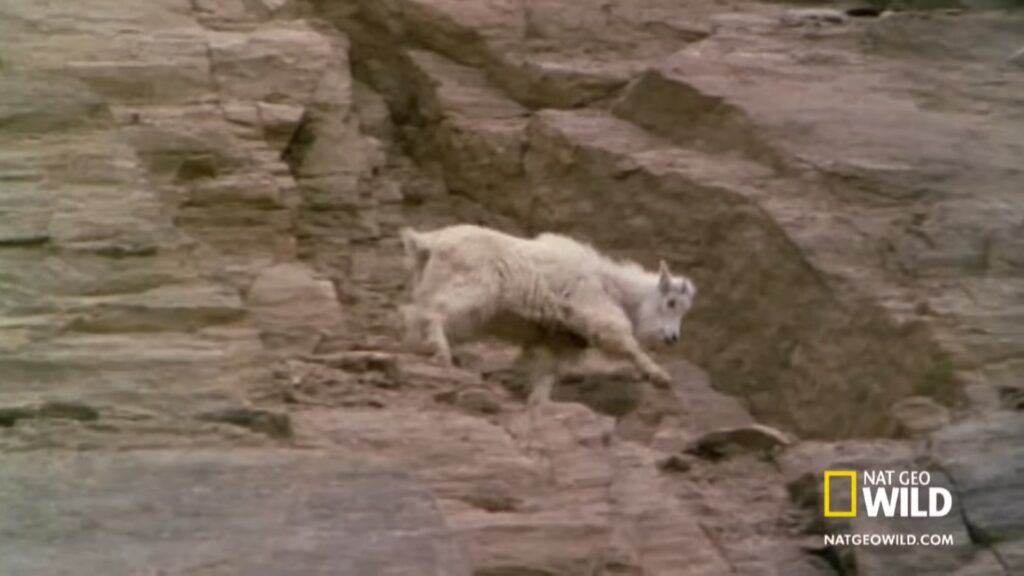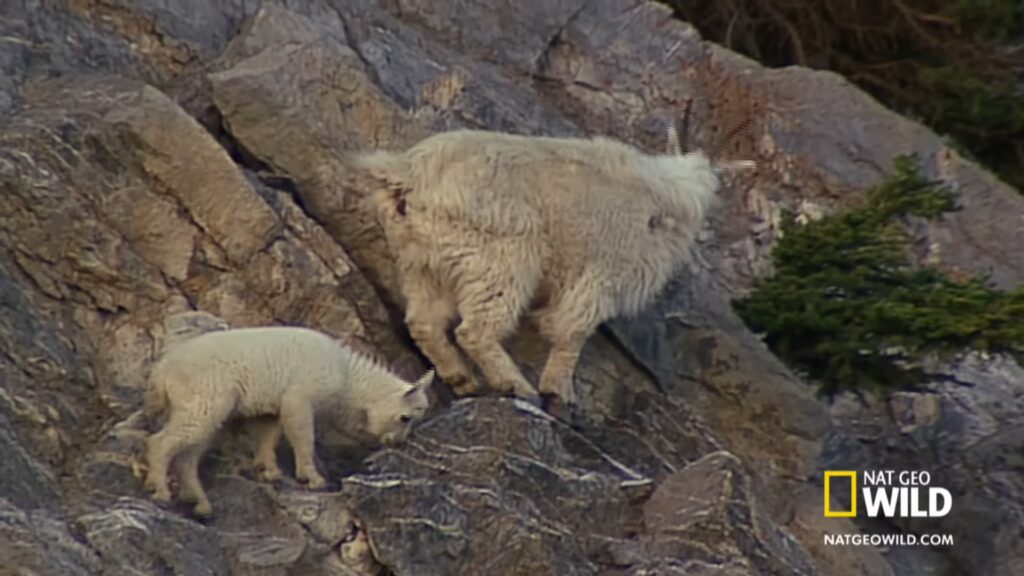The Real GOATs: Why Mountain Goats are Nature’s Ultimate Rock Climbers
Picture a sheer, unforgiving cliff face. A vertical wall of rock where a single misstep means a fatal plunge. For most creatures, this is a no-go zone. But then, you see it—a flash of white, moving with an impossible, casual grace. It’s a mountain goat, calmly navigating a surface that would challenge an expert human climber with a full set of ropes and gear.
If you’ve spent any time online, you’ve probably seen the viral videos: a herd of goats clinging to the near-vertical wall of a dam, or a baby goat (a “kid”) hopping down a seemingly impassable rockslide. It looks like they’re defying gravity, a glitch in the matrix of the animal kingdom.
But this isn’t magic. It’s the breathtaking result of millions of years of evolution. So, what makes these creatures the undisputed GOATs (Greatest Of All Time) of mountaineering



It’s All in the Feet: The Ultimate Climbing Shoes
The secret to a mountain goat’s incredible climbing ability starts from the ground up—with their hooves. A goat’s hoof is a marvel of biological engineering, perfectly designed for life on the ledge.
Unlike a horse’s solid hoof, a goat’s hoof is cloven, meaning it’s split into two toes that can spread apart and move independently. This allows them to adjust their grip to the contours of uneven surfaces. But the real genius is in the hoof’s structure:
- A Hard Outer Shell: The outer edges of the hoof are like a hard, sharp keratin case. This allows them to dig in and find purchase on the tiniest of rock ledges—some no wider than a coin.
- A Soft, Rubbery Pad: The inner part of the hoof is a soft, concave pad. When the goat puts weight on it, this pad squishes down and molds to the rock’s texture, creating a suction-cup-like grip similar to the sole of a high-end climbing shoe.
Essentially, they have built-in crampons and sticky-soled shoes on every foot. Add to that their dewclaws—two extra toes higher up the leg—which act as emergency brakes or extra grip points on steep descents.
Built for the Vertical Life
Beyond their amazing hooves, a mountain goat’s entire body is a testament to its high-altitude lifestyle.
- Powerful Build: They have incredibly powerful, stocky bodies with muscular shoulders and necks. This isn’t for sprinting across plains; it’s for pulling their entire body weight up and over ledges with sheer strength.
- Low Center of Gravity: Their short legs and stout frame keep them stable and balanced, making them less likely to be toppled by a gust of wind on a narrow precipice.
- Fearless Focus: Mountain goats are born and raised on cliffs. They possess an innate spatial awareness and an utter lack of vertigo. What looks like a death-defying act to us is just another Tuesday commute for them.
But Why Risk It All?
So we know how they do it. But why do they undertake these perilous climbs in the first place? It comes down to two key survival drivers: safety and sustenance.
- Predator Evasion: Living life on the edge is the ultimate defense strategy. Predators like bears, wolves, and cougars are exceptional hunters on level ground, but they can’t follow a goat up a vertical rock face. The cliffs are a fortress, providing a safe place to rest, raise their young, and escape danger.
- The Craving for Minerals: This is the most fascinating reason. Those famous pictures of goats on dam walls? They aren’t trying to get to the other side. They are licking the wall. Concrete, like natural rock faces, contains mineral salts and other essential nutrients like calcium and sodium that are often scarce in their high-altitude diet. Goats have an instinct for finding these natural “salt licks,” even if they are located in the most precarious of places.
A Fun Fact: They Aren’t Actually Goats!
Here’s a little twist for your next trivia night. The animal we call the North American Mountain Goat (Oreamnos americanus) isn’t technically a “true goat” from the genus Capra (like the Ibex or domestic goats). It’s actually part of the “goat-antelope” family and is more closely related to the chamois of Europe.
Of course, true goats like the Alpine Ibex are also phenomenal climbers, sharing many of the same adaptations. But the fluffy white daredevils of the Rockies have carved out a unique identity as nature’s most audacious mountaineers.
So, the next time you feel like you’re facing an insurmountable obstacle, just picture a mountain goat, calmly licking a rock on a sheer cliff face. It’s a powerful reminder that with the right tools, a bit of nerve, and a clear motivation, almost anything is possible.